SUMMARY
This is AI generated summarization, which may have errors. For context, always refer to the full article.
MANILA, Philippines – Not far from Manila is an island that holds so much history. Being a self-confessed history geek, I’ve always been practically ashamed of the fact that I have never been to Corregidor. Though I have read about it and have pretty good knowledge of what transpired on the island, I never had the chance to see it for myself.
So for one of our out-of-the-box dates, my husband decided that we should join a day tour in our country’s last military bastion during the Japanese take over of the Philippines in 1942. Nope, it wasn’t Bataan that surrendered last. Our tour guide was quite quick to clarify that 10 days after the Bataan Death March ended, the island of Corregidor was still fighting, trying to repel the Japanese forces.
First things first
We booked our tour a week before at the Sun Cruises office at the CCP Complex in Pasay City. However, we were told that there are other ways to tour in the island. People who are coming from the province of Bataan can even take a 20-minute boat ride to the island and do a walking tour. We were later informed that there are also people who organize tours for private groups.
Damage to your wallets will be at around P2400 per person. This includes ferry transfers and a buffet lunch at the Corregidor Hotel.
Prepare for the trip by bringing your own water bottle. Though chips and soda are available throughout the tour and there are tourist and food shops in the island’s tourist spots, it’s best to bring your own. Wear light clothes in breathable material and make sure that your shoes are conducive to a long day of walking.
Going back in time
Getting to Corregidor takes about one hour by ferry from the boat terminal in Pasay. On the way there, they will play a documentary about Corregidor’s role in World War II.
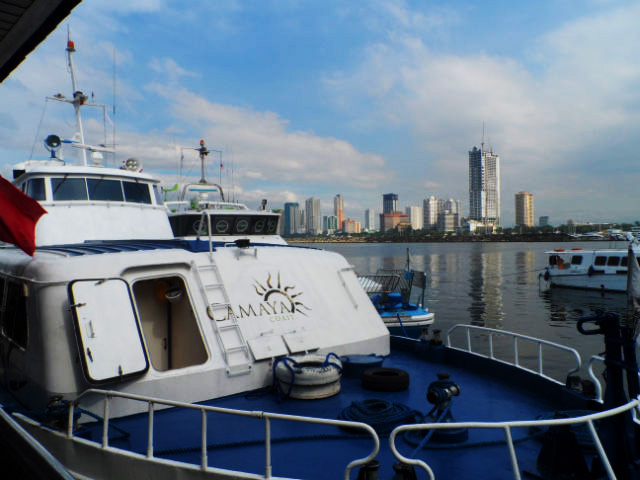
Looking out the boat’s window will also give you a fantastic view of Roxas Boulevard and the Manila Skyline from Manila Bay.
Upon arrival on the island, we were led to a couple of tranvias that would be driving us around the island. We were first brought to the Corregidor Hotel for lunch before starting the actual tour.
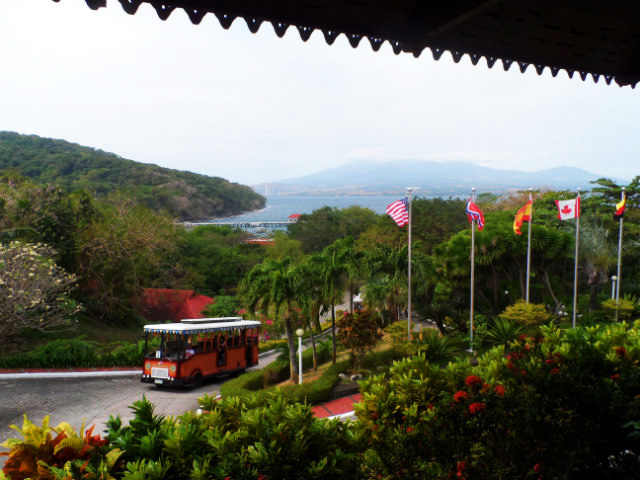
The tour’s program operates on a tight schedule and for your group to be able to see much of the island, it is best to stick with the time the guide allots to your group. 40 minutes for lunch should just be 40. We were lucky that our group was punctual and the guide was strict. We were able to get to most of the sites first to be able to appreciate and learn about them in less chaotic circumstances.

If you’re a fan of war movies or military equipment, you will enjoy Corregidor. Though heavily bombed during WWII, the island still has some of its artillery standing (some, after restoration). Battery Way is one of the island’s artillery batteries. These guns were operated by several people and can make 360-degree turns and can hit targets in Bataan. Beside Battery Way is its own ammunition magazine which has walls that are 3-feet thick, plus an 8-foot thick solid concrete roof to make sure that an accidental explosion doesn’t cause much damage.
Battery Way, as well as all the other artillery batteries in the island, took several years to build as the concrete needed to cure for several years before guns could be installed. Battery Way in particular took about 5 years to build.
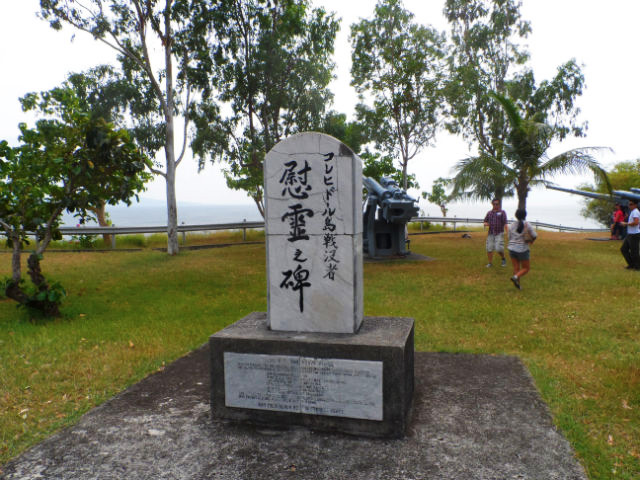
The Japanese Garden of Peace used to be a cemetery. After American forces recaptured the island in 1945, they buried many dead Japanese soldiers there with crosses to mark their place. The bodies were later exhumed and brought to Japan. It is now a memorial for everyone who perished in the war.
There’s a shrine for praying, and several markers. The one photographed above had a long inscription which used to be dedicated to “the brave Japanese soldiers.” We were told by the guide that a war veteran once came to the island for a tour and upon seeing what was written, he took out a blade, hacked off those words, and replaced the inscription with “brave heroes” instead in honor of his friends who perished in the hands of the Japanese.
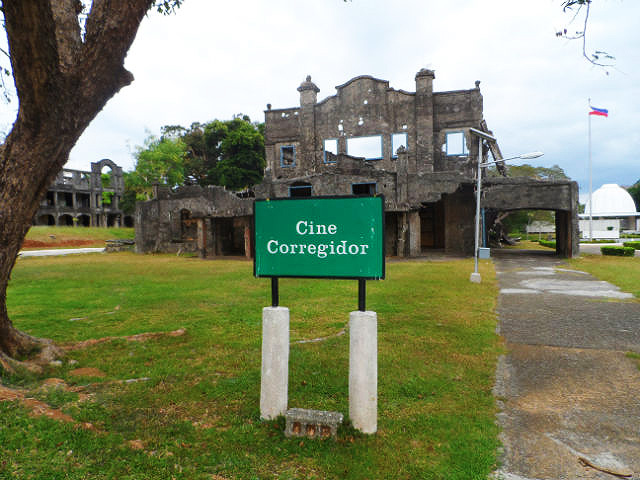
During the American Colonial period, the island was a military paradise, something that should have been comparable to Subic and Clark during their heyday. It was called Fort Mills by the Americans as a part of the Manila Bay Harbor Defense Fortifications they set up after they acquired the Philippines from the Spaniards.
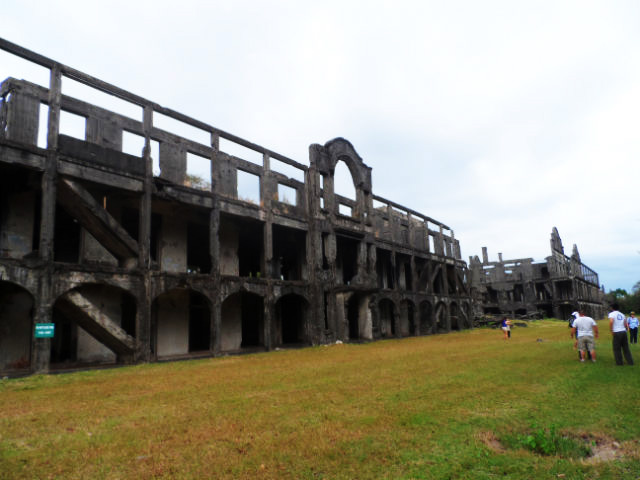
The island had a cinema, a school, and comfortable barracks for both American and Filipino soldiers residing there. Military personnel would have dance parties as they built more fortifications around the island itself and its neighboring islets as protection for Manila Bay.
One of these fortifications is the engineering marvel that is the Malinta Tunnel. This bomb-proof storage facility was built from 1922 to 1932. It has a main tunnel that runs for over 800 feet with several lateral tunnels branching out on each of its sides. When war broke out in the Pacific, some of the lateral tunnels were turned into a 1,000-bed hospital facility.
During the battle of Corregidor in 1942, Malinta Tunnel became the headquarters of General Douglas MacArthur and the United States Army Forces in the Far East (USAFFE). It also became the hiding place of President Manuel Quezon. He and his Vice President Sergio Osmena also took their oath at the tunnel’s West Entrance.
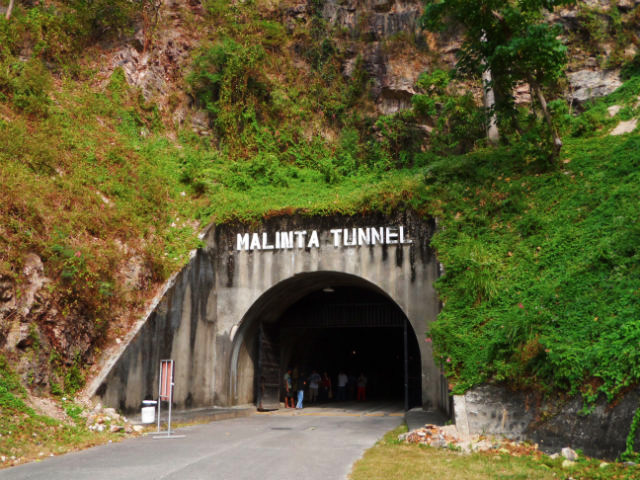
In 1945, during the Americans’ retaking of the island, Japanese forces trapped inside committed suicide by detonating explosives (it was bomb proof outside, not from the inside). This caused some of the lateral tunnels to cave in. Some of them are still being excavated to this day.
During the tour, participants can walk through the tunnel where key points in Corregidor’s history are brought to life through a lights and sounds show. You will hear President Quezon and General McArthur’s discussions and even hear the rumblings of a bombing. This will cost an extra P200 per person, but you’ll regret it if you miss out on this part of the tour.
In a nearby part of the island is Corregidor’s lighthouse. First lit in 1853, it was built to help ships as they entered the mouth of Manila Bay and guided them to the port. The island got its name from the word, “corregir” which literally means ‘to correct.’ It was later on made to be the island of where the “corregidor” or “the corrector” dwells. A corregidor is the person who acted as the Customs inspector during the Spanish period. Boats always had to pass through the Isla del Corregidor (Island of the Corrector) to have the cargo they were bringing in and out of Manila checked.
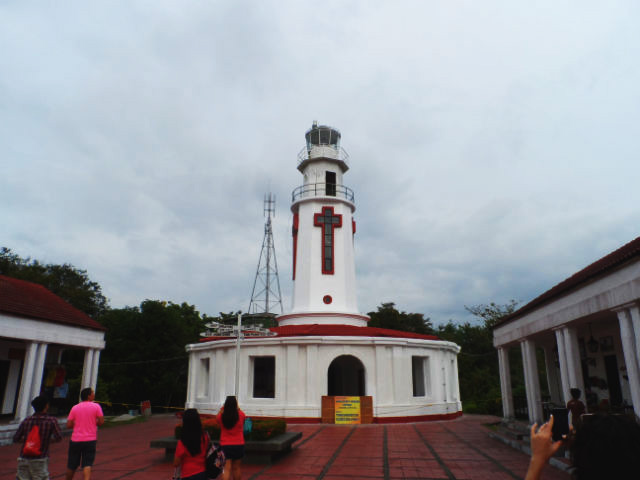
The tour ended at the museum where war memorabilla, photos, letters, and even vintage plane models can be viewed. A walk along the Pacific War Memorial will also show you a dome, perfectly positioned to have the sun shine exactly through its oculus every 6th of May at noon, commemorating the fall of Corregidor. Yearly, a ceremony is held at the memorial to honor the fallen soldiers, with veterans, no matter how frail they are by now, still attending.
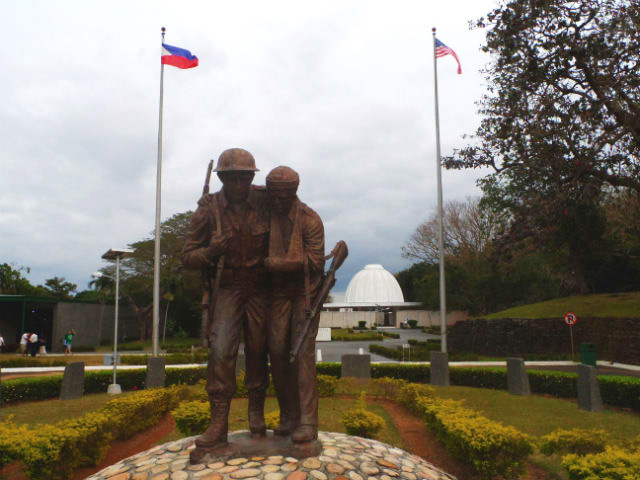
The tour is said to be a favorite among foreigners visiting Manila due to the island’s fascinating story and its proximity to the capital. You may chance upon American veterans (or their children), Europeans interested in the Pacific theater of WWII, and even a handful of Japanese tourists. Some stay longer on the island to venture into the woodlands and see Japanese foxholes used during the war. Some try ghost-hunting while others try their luck picking up an artifact or two. If you don’t have the time to look for some yourself, there are a handful being sold on the island.

A tour of Corregidor is indeed a must for every Filipino. It’s an effective reminder of the sacrifices of soldiers who fought for freedom and what they believed in. It helps that a trip like this requires minimal planning; call, book your tour and ferry, and go! – Rappler.com
Add a comment
How does this make you feel?
There are no comments yet. Add your comment to start the conversation.